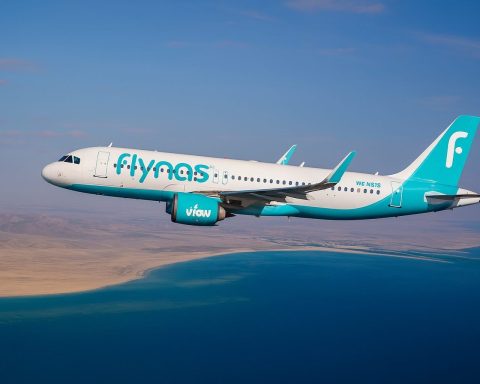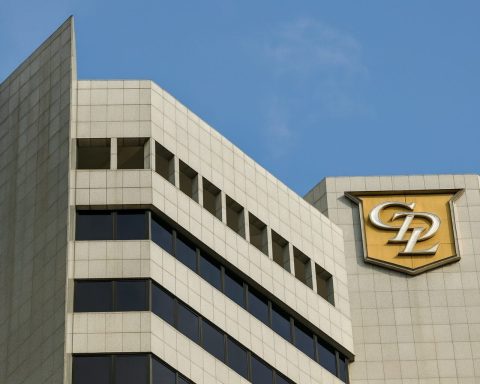- Deal Volume Nears Record High: Asia-Pacific hotel investment volumes have reached US$12.1 billion as of August 2025, putting the region on pace to match or exceed 2024’s total of ~US$16.3 billion in transactions [1]. JLL similarly forecasts full-year 2025 volume around US$12.8 billion (about a 5% uptick from last year) driven by a flurry of second-half deals [2].
- Investors Eager, Prime Markets Targeted: Investors are hungry for hotel acquisitions even as the recovery remains uneven. Singapore, Japan and the Maldives rank among the top targets for capital – markets with high barriers to entry yet stable, high-yield returns ideal for luxury and upper-upscale hotels [3]. Private equity and high-net-worth buyers have become especially active, hunting value-add opportunities in midscale properties that can be rebranded or converted to boost returns [4] [5].
- Hotel Performance Mixed in 2025: The hospitality sector’s metrics are improving but underwhelming by recent standards. Average daily rates (ADR) are up and even outpacing inflation in many Asia-Pacific markets, thanks to limited new supply [6]. However, occupancies still lag pre-pandemic levels in most countries [7]. At the same time, rising labor, food and energy costs are squeezing profit margins – making 2025 a “mixed year” in which investors see opportunity, but operators face tighter margins on the ground [8].
- Tourism Rebound Fuels Optimism: A surging travel recovery underpins these investments. The International Air Transport Association projects Asia-Pacific air passenger demand to grow 9% in 2025, the fastest of any region globally [9]. International arrivals are climbing across APAC. For example, Thailand’s tourism has roared back – the country expects ~36–40 million visitors in 2025 (near pre-COVID levels), with Bangkok hotel occupancies averaging ~79% and room rates up ~7% year-on-year [10]. Many investors anticipate further upside as Chinese outbound travel (still below 2019 levels) and India’s travel boom add to future demand [11].
- Focus on Resilience and Long-Term Value: Industry leaders stress that long-term resilience is the new watchword for hotel growth. “When we look at hotel investments in general, the main question to ask is whether this property will continue to be relevant five years from now,” noted one hospitality CEO at the HICAP conference [12]. In practice, this means creative strategies to keep assets profitable: some investors are repurposing hotels into student housing or co-living residences in markets like Korea, Singapore and Australia [13], while others double down on prime assets. Notably, Pan Pacific Hotels Group recently sold a Singapore hotel for US$500 million (after carrying it on its books at just US$100 million) – netting a $400 million gain [14] that exemplifies the payoff of patient, strategic hotel investment.
APAC Hotel Deals Surge Toward New Highs
Asia-Pacific hotel investment activity has surged in 2025, setting the stage for one of the strongest deal years on record. By the end of August, hotel transaction volumes hit US$12.1 billion – a figure that nearly eclipses the pace of last year’s record haul [15]. Despite a slow start to the year, deal-making accelerated in recent months as buyer and seller expectations realigned. “Investors are ready and interested in deals,” observed Jesper Palmqvist of STR, describing 2025 as a “mixed year” where capital is eager even if performance hasn’t fully rebounded [16]. Real estate services firm CBRE reports that full-year investment is on track to at least match 2024’s US$16.3 billion total [17], while JLL expects roughly 5% growth in hotel deal volume this year to about $12.8 billion [18].
Several factors are driving the Asia-Pacific hotel investment frenzy. Abundant liquidity – including private equity dry powder and family office funds – is targeting hotels as a play on Asia’s travel rebound. Cross-border capital is flowing in, aided by currency advantages like a strong US dollar [19] [20]. In 2024, this led to a 15% jump in APAC hotel investment liquidity, even as the Americas saw declines [21] [22]. By now, most Asia-Pacific countries have fully reopened to travel, unleashing pent-up tourism demand that bolsters hotel revenues. With fewer new hotels being built (due to high construction costs and interest rates), investors see an opportunity to buy existing assets and ride the recovery. “Coming off a high base last year, the investment moderation [earlier in 2025] is realigning capital sources,” notes Nihat Ercan, JLL’s Asia-Pacific Hotels chief, adding that private buyers are moving decisively to secure prime hospitality assets with both defensive income and growth potential [23].
Notably, deal activity has concentrated in a few key markets. According to JLL, a whopping 84% of hotel investment in H1 2025 occurred in just five countries: Japan, Greater China, Australia, Singapore, and South Korea [24]. Japan alone saw $1.5 billion in H1 hotel trades – benefitting from a weak yen and ultra-low interest rates – while Singapore notched over $546 million [25]. This “safe haven” bias shows investors gravitating to established markets and gateway cities. Japan remains the region’s hottest hotel investment market, accounting for nearly 40% of 2024’s volume [26] [27]. Big-ticket deals in Japan – such as the ¥106 billion (US$695 million) sale of the Grand Nikko Tokyo Daiba in late 2024 – set record per-key pricing and drew global investor attention [28]. Singapore, likewise, continues to attract intense interest; its combination of limited land, high tourism spending, and status as a financial hub makes Singaporean hotels prized assets. It’s no coincidence that Singapore, Japan and even niche markets like the Maldives were cited as top targets for hotel investors this year, given their stable yields and high barriers to entry in the luxury segment [29]. Investors are willing to pay a premium in these markets for trophy properties, confident in long-term value.
Luxury Leads the Way, But Value-Add Deals Abound
Another defining feature of the current boom is where the money is going. High-end hotels are commanding the bulk of capital. In 2024, luxury and upper-upscale properties made up nearly 85% of APAC investment value [30] [31], as institutional investors chased iconic assets and resorts. From beachfront resorts in the Maldives to marquee city hotels in Tokyo and Sydney, top-tier properties are trading at premium prices. “Upscale to luxury segments have represented almost 85% of total hotel investment in APAC” recently, affirming that luxury dominates value even if mid-market hotels lead in deal count [32] [33]. For example, when Pan Pacific Hotels Group sold one of its Singapore luxury hotels for $500 million (after having it on the books for only $100 million), it pocketed a $400 million windfall [34]. “That’s a nice pocket of $400 million,” Palmqvist quipped of the deal, highlighting the kind of multi-bagger returns drawing investors to Asia’s hotel sector [35]. It illustrates how patient capital can realize tremendous gains in this region’s hospitality market – a single asset’s appreciation over time can vastly outperform many other industries [36].
At the same time, value-add and alternative-use plays are on the rise. With fewer brand-new hotels being built, investors are getting creative with existing assets. Midscale and even economy hotels – long the most active segment by number of deals [37] – are being eyed for repositioning. Many buyers are looking for older, underperforming properties that can be renovated, rebranded, or repurposed to unlock value [38]. According to CBRE, “conversions of hotel assets into student accommodation” have emerged as a notable trend, as have investments in co-living residences using former hotel buildings [39]. This is especially true in markets with housing crunches: Singapore, Hong Kong, Australia, and South Korea are seeing investors convert well-located hotels into student dorms or co-living spaces to tap new income streams [40]. Such conversions offer a double benefit – they fill a gap in the rental housing market while providing hotel owners an exit strategy or new revenue model.
Even within traditional hospitality, “lifestyle” hotels and soft-brand collections are gaining favor. Developers are embracing trendy, design-forward hotel concepts that appeal to younger travelers, hoping to reposition older assets as hip lifestyle destinations. These moves speak to an overarching strategy: investors are future-proofing their portfolios, favoring hotels that can adapt to changing traveler preferences. As one hotel CEO put it at the HICAP conference, resilience and relevance over time are key – the question is whether a hotel will still “be relevant five years from now” in its market [41]. If not, savvy investors either pass on the deal or plan how to reinvent the property post-acquisition. Rebranding opportunities in the lifestyle and boutique segment are “increasingly attractive” as operators seek to refresh older hotels and meet evolving guest expectations [42]. In short, the region’s hotel investors are not just buying properties; they are buying income streams and growth stories, with a clear plan to add value through renovations, brand changes, or even alternate uses.
Hospitality Recovery Continues – With Caveats
Underpinning the investment boom is the continued recovery of travel and hospitality across Asia-Pacific, albeit at a more measured pace than the initial post-pandemic rebound. The good news is that demand indicators are broadly positive. Average occupancy and revenue per available room (RevPAR) have improved year-on-year in virtually all APAC markets in 2025 [43] [44]. International tourism has roared back: Southeast Asia and the Pacific saw double- or triple-digit percentage jumps in arrivals last year, and most destinations have regained a large share of their pre-2020 tourist volumes [45]. Key travel hubs like Thailand are approaching full recovery – the country welcomed 35.5 million visitors in 2023 (up 152% from 2022) and is on track for ~37 million in 2025 [46], nearly back to its 2019 record. Hotel occupancies in Bangkok are hovering near 80% on average, and Phuket’s visitor counts have fully returned to pre-COVID levels [47]. Other vacation hotspots like Bali, Maldives, and coastal Australia are reporting peak season occupancy comparable to 2019, thanks to unleashed pent-up demand. Business travel is also on the mend – group and corporate travel in Asia-Pacific has steadily risen in 2024–25, aiding higher weekday occupancy and meetings/events business [48] [49].
Critically, room rates have surged, helping offset the lag in volumes. Average daily rates across APAC are 14–20% above 2018–19 highs on average [50], as hotels capitalized on strong leisure demand and limited competition to raise prices. “ADR continues to outpace inflation” in many markets [51], according to CBRE, reflecting both inflationary pricing and travelers’ willingness to spend more per night post-pandemic. In some cities, rates have hit all-time highs: JLL notes that Bangkok’s average hotel rates in 2025 exceeded previous peaks despite Thailand’s slight dip in tourist numbers this year [52] [53]. Tokyo’s hotels are similarly seeing record ADR even as occupancy is just shy of pre-COVID levels [54]. This rate-driven revenue growth has been vital for hotels’ profitability, because one thing that has not fully recovered is occupancy. Most of Asia’s major markets are still a few points below 2019 occupancy percentages (e.g. Tokyo just over 80% vs ~85% in 2019, Singapore holding steady but not dramatically higher than last year, etc.) [55] [56]. Region-wide, occupancy remains about 10% below pre-pandemic norms as of mid-2025 [57]. The slower rebound in China’s outbound tourism (due to that country’s later reopening and economic headwinds) has been one drag – Chinese travelers were a huge demand base that is only partially back online. India’s outbound travel is a bright spot, growing briskly, but it cannot fully fill the China gap [58]. Overall, hoteliers have had to accept that the easy occupancy gains are behind them; going forward, it’s a more gradual climb, reliant on more flights being added and travelers from lagging segments (e.g. mainland Chinese tour groups) coming back.
Meanwhile, operating costs have jumped, creating a margin squeeze even as revenues rise. Inflation in Asia hit hospitality in unique ways: for instance, Japan saw food prices up ~7% in 2023-24, the highest jump in 40 years [59], which drove up F&B costs for hotels. Labor shortages in many countries have forced wage hikes; markets like Australia and Japan are seeing wage growth outstrip revenue growth in hotels [60]. Energy prices and insurance premiums are also higher than pre-pandemic. The result is thinner profit margins – owners are paying more for staff, utilities and supplies, which eats into the gains from higher room rates. Palmqvist pointed out that if ADR hadn’t risen so strongly, many hotels would be in a much tougher spot financially [61]. “All these costs need to be flushed out to the guest,” he noted, meaning hoteliers must pass on cost increases via higher rates to stay profitable [62]. Many have done so successfully thus far, but there’s a limit to how much the market can absorb. This dynamic has made hotel companies more cautious on development and expenses. New hotel supply growth in Asia-Pacific has slowed to a trickle, partly by necessity – high construction costs and expensive financing have postponed projects or downsized pipelines [63]. According to industry reports, upcoming hotel openings in the region are below the pre-COVID trend, which actually helps existing assets by keeping competition down [64]. But it also means any demand surge goes straight into higher occupancy and pricing for the current hotels, rather than new rooms.
In summary, Asia-Pacific’s hospitality recovery in 2025 is steady but not spectacular – a moderation from the frenzied rebound of 2022–23. “Hotel performance continues to improve across most markets… but growth is proceeding at a slower rate than the last couple of years,” CBRE observed in its latest Asia Pacific Hotels outlook [65]. Many markets are still catching up to 2019 numbers rather than greatly exceeding them. This tempered performance backdrop is exactly why the investment story stands out – investors appear to be looking past the short-term operational hiccups and betting on the long-term fundamentals (rising travel demand, limited supply, and Asia’s economic growth). Hoteliers, for their part, are adapting by using real-time pricing (to maximize revenue on peak days) and controlling costs where possible [66]. The consensus is that the worst is behind us, and while global macroeconomic and geopolitical risks persist, Asia’s hotels are entering 2026 on firmer footing than they’ve been in years.
Outlook: Asia’s Hotel Sector Set for Growth
Looking ahead, industry experts remain cautiously optimistic that Asia-Pacific’s hotel investment momentum will carry into 2026 and beyond. The region is uniquely positioned as a future global tourism hub, with the World Economic Forum noting that Asia leads all regions in tourism’s contribution to GDP growth [67]. Simply put, travel and hospitality are becoming even more integral to Asian economies, from Southeast Asia’s beach destinations to East Asia’s megacities. This creates a virtuous cycle: governments prioritize tourism infrastructure, airlines expand routes, and investors see a reliable growth trajectory in hotels. The International Air Transport Association forecasts APAC will have the highest air passenger growth in the world in 2025 and 2026 [68], indicating robust demand tailwinds for hotels. Markets that have lagged – notably Mainland China outbound travel – represent significant upside once fully revived. Industry data shows Chinese outbound tourism is still well below 2019 levels, so as that normalizes, destinations in Asia (Thailand, Vietnam, Japan, etc.) will get another boost in visitors [69]. India’s tourism boom and the resurgence of Japan as a favorite destination (helped by the weak yen) are additional demand drivers that could make 2026 a banner year.
From the investment perspective, a few trends are likely to shape 2026. First, we can expect a continued surge of private capital into hotels. JLL notes that private equity firms increased their hotel investments by 6% year-on-year in H1 2025 [70], and regional high-net-worth individuals ramped up hotel buying by 54% in the same period [71]. This influx of non-traditional buyers – many of whom are less constrained by bureaucracy than institutions – should keep bidding competitive for quality assets. Second, more “operational real estate” investors will blur the lines between hotels and other property types. The trend of conversions (hotels to rentals, etc.) is likely to continue, as investors chase yield and flexibility. We may see creative deals like partial hotel, partial co-living developments, or hotels being acquired by student housing REITs and hybridized. Third, sustainability and resilience metrics will gain prominence. Investors and lenders are increasingly evaluating hotels on energy efficiency, climate resilience, and ESG scores. In Asia-Pacific, where many resorts are in vulnerable coastal or island locations, expect more emphasis on storm-proof design and sustainable operations to protect value (especially after events like 2024’s back-to-back typhoons hitting Japan and floods in Southeast Asia). As one example, major owners like Host Hotels have poured millions into resiliency upgrades after seeing properties damaged by extreme weather, emphasizing that such spending is essential to “preserve long-term value” in a volatile climate era [72] [73]. Going forward, hotels that can demonstrate environmental and financial resilience will be even more attractive to investors.
Finally, market analysts anticipate further growth in transaction volumes. Some forecasts suggest Asia-Pacific hotel investment could set a new high in 2026, potentially topping this year’s totals [74]. While the exact figures vary by source, the direction is clear: moderate growth is expected as more deals that were delayed in recent years finally come to fruition. “The final six months of 2025 presents compelling entry points for strategic investors,” says JLL’s Ercan, who expects an active deal pipeline to carry into next year [75] [76]. Industry data backs this up – a backlog of transactions in due diligence is slated to close in late 2025 and early 2026 [77]. Barring any major economic shocks, that means higher volumes. JLL’s latest outlook even predicts Asia-Pacific hotel investment volumes to rise again in 2026, continuing the post-pandemic growth trend. The combination of strong fundamentals and ample capital is a recipe for sustained investment momentum.
In summary, Asia-Pacific’s hotel investment market is red-hot: investors worldwide are betting big on the region’s lodging sector, lured by high returns and long-term travel growth. They are doing so with eyes wide open – acknowledging that the hospitality recovery is not without challenges (cost inflation, uneven tourism flows) – yet they remain convinced of the sector’s resilience. As one HICAP panelist remarked, the key is ensuring each asset can withstand the test of time and disruption [78]. Those bets on resilience appear to be paying off. With billions already deployed this year and even more on the horizon, 2025 may be remembered as the year Asia-Pacific hotels became the “must-have” asset class for global real estate investors. And if current trends hold, 2026 could bring even bigger headlines – from record-breaking deal volumes to innovative new uses for hotel properties – as the region’s hospitality investment boom marches on.
Sources
- Sean McCracken & Bryan Wroten, CoStar News – “Hotel investors in Asia-Pacific eager for deals while performance underwhelms” (Oct. 29, 2025) [79] [80] [81]
- Real Estate Asia – “APAC hotel investment on track to breach 2024 totals” (Oct. 28, 2025) [82] [83] [84] [85]
- JLL Hotels & Hospitality – “Asia Pacific hotel investment volume totals USD4.7b in first half 2025” (Sept. 15, 2025 press release) [86] [87] [88]
- Mateusz Kaczmarek, TS2.tech – “Thailand Real Estate Market 2025: Boom Times or Bubble?” (Oct. 17, 2025) [89] [90]
- Marcin Frąckiewicz, TechStock² (TS2.tech) – “Airbnb Stock Jumps on AI Upgrades and Travel Boom” (Oct. 22, 2025) [91] [92]
- Global Asset Solutions – “Asia-Pacific Hotels Transactions & Market Snapshot (2024 – H1 2025)” (Sept. 2025 report) [93] [94]
References
1. realestateasia.com, 2. www.jll.com, 3. www.costar.com, 4. realestateasia.com, 5. www.jll.com, 6. realestateasia.com, 7. realestateasia.com, 8. www.costar.com, 9. realestateasia.com, 10. ts2.tech, 11. www.globalassetsolutions.com, 12. www.hotelinvestmenttoday.com, 13. realestateasia.com, 14. www.costar.com, 15. realestateasia.com, 16. www.costar.com, 17. realestateasia.com, 18. www.jll.com, 19. www.hotelnewsresource.com, 20. www.hotelnewsresource.com, 21. www.globalassetsolutions.com, 22. www.globalassetsolutions.com, 23. www.jll.com, 24. www.jll.com, 25. www.jll.com, 26. www.hotelnewsresource.com, 27. www.hotelnewsresource.com, 28. www.hotelnewsresource.com, 29. www.costar.com, 30. www.hotelnewsresource.com, 31. www.hotelnewsresource.com, 32. www.globalassetsolutions.com, 33. www.globalassetsolutions.com, 34. www.costar.com, 35. www.costar.com, 36. www.costar.com, 37. www.globalassetsolutions.com, 38. realestateasia.com, 39. realestateasia.com, 40. realestateasia.com, 41. www.hotelinvestmenttoday.com, 42. www.globalassetsolutions.com, 43. www.globalassetsolutions.com, 44. www.globalassetsolutions.com, 45. ts2.tech, 46. ts2.tech, 47. ts2.tech, 48. www.globalassetsolutions.com, 49. www.globalassetsolutions.com, 50. www.globalassetsolutions.com, 51. realestateasia.com, 52. www.jll.com, 53. www.jll.com, 54. www.jll.com, 55. www.jll.com, 56. www.jll.com, 57. www.globalassetsolutions.com, 58. www.globalassetsolutions.com, 59. www.costar.com, 60. www.hotelnewsresource.com, 61. www.costar.com, 62. www.costar.com, 63. www.hotelnewsresource.com, 64. realestateasia.com, 65. realestateasia.com, 66. realestateasia.com, 67. realestateasia.com, 68. realestateasia.com, 69. www.globalassetsolutions.com, 70. www.jll.com, 71. www.jll.com, 72. www.costar.com, 73. www.costar.com, 74. www.hotelinvestmenttoday.com, 75. www.jll.com, 76. www.jll.com, 77. www.jll.com, 78. www.hotelinvestmenttoday.com, 79. www.costar.com, 80. www.costar.com, 81. www.costar.com, 82. realestateasia.com, 83. realestateasia.com, 84. realestateasia.com, 85. realestateasia.com, 86. www.jll.com, 87. www.jll.com, 88. www.jll.com, 89. ts2.tech, 90. ts2.tech, 91. ts2.tech, 92. ts2.tech, 93. www.hotelnewsresource.com, 94. www.globalassetsolutions.com










